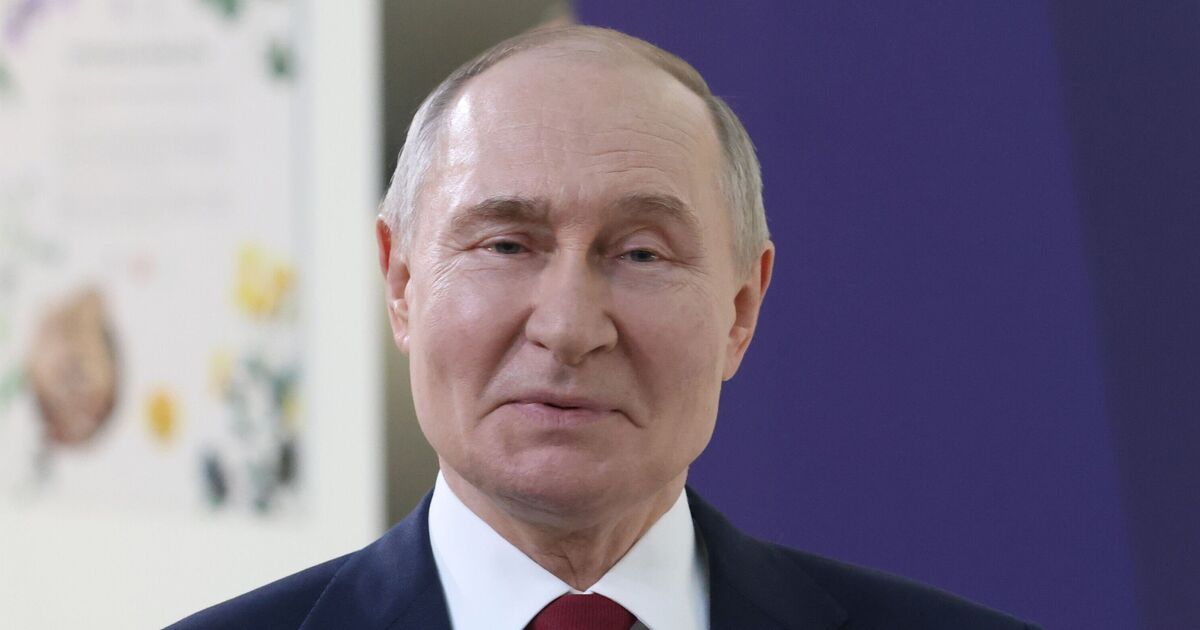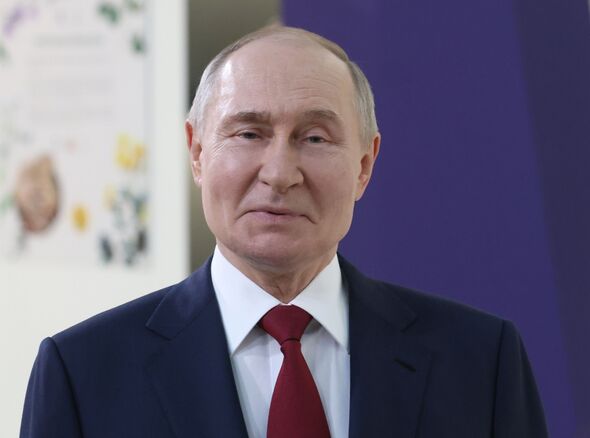
Putin has his finger on the world’s largest stockpile of nuclear weapons (Image: Getty)
Vladimir Putin has issued a chilling threat to the West saying “there has been no need to use (nuclear) weapons…and I hope they will not be required”.
The statement – made in a propaganda film to mark his 25-year iron grip on power – comes as Russia’s war with Ukraine rumbles on in its fourth year.
Russia has 5,449 nuclear warheads – the largest number of atomic weapons on earth – which can launch from missiles, submarines and aircraft.
Experts say Putin, who hoodwinked the world into believing he would show up for peace talks only to give them a miss, could not be trusted in word or deed.
He has already placed his nuclear forces on “combat duty” and lowered the threshold for weapons use from an existential threat to Russia to a threat to its territorial integrity.
Despite the menacing manoeuvres the despot, who seized when Boris Yeltsin resigned in 1999, said: “We have enough strength and means to bring what was started in 2022 to a logical conclusion with the outcome Russia requires.”
Putin signed a revamped version of Russia’s nuclear doctrine in November making clear the circumstances allowing him to use Moscow’s atomic arsenal. It lowered the bar, giving him that option in response to even a conventional attack backed by a nuclear power.
It is the first time in Putin’s reign as president he has essentially placed his nuclear forces on a war footing.
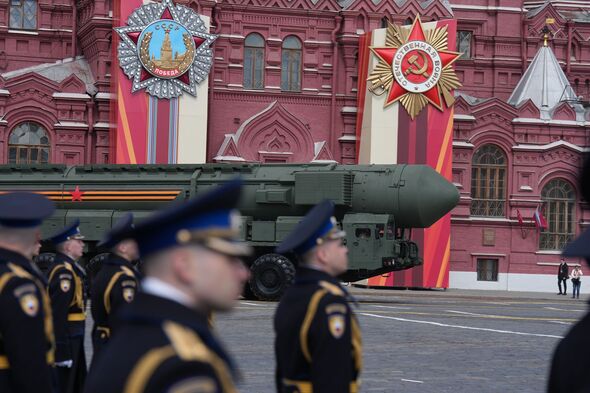
Military might: Russia has 5,449 nuclear warheads (Image: Getty)
No country has used nuclear weapons since the Second World War when America dropped bombs on Hiroshima and Nagasaki in Japan, killing 200,000 innocent people.
According to the latest data from the International Campaign to Abolish Nuclear Weapons [ICAN] America has 5,277 warheads.
The weapons held by Russia and America account for nearly 90% of this win active military stockpiles. China, France, Britain, Pakistan, India, Israel, North Korea, are the only other nations that possess nuclear weapons.
Geneva-based ICAN said: “A single nuclear warhead could kill hundreds of thousands of people, with lasting and devastating humanitarian and environmental consequences. Detonating just one nuclear weapon alone over New York would cause an estimated 583,160 fatalities.
“Combined, China, France, India, Israel, North Korea, Pakistan, Russia, the United Kingdom and the United States possess over 12,300 nuclear weapons, most of which are many times more powerful than the nuclear weapon dropped on Hiroshima. Thirty-two other states are also part of the problem, with six nations hosting nuclear weapons, and a further 28 endorsing their use.”
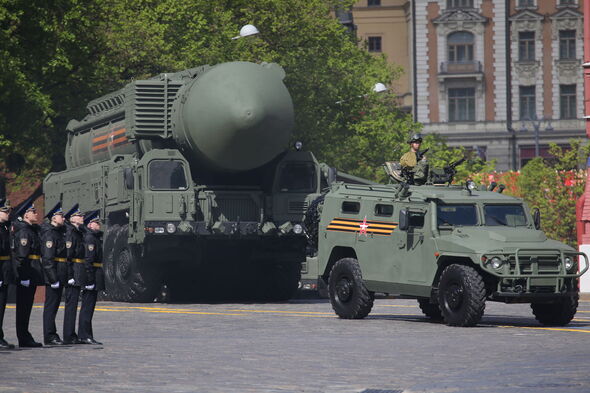
Moscow has weapons which can launch from missiles, submarines and aircraft (Image: Getty)
Ukraine was forced to hand over its 1,900 strategic nuclear warheads – inherited after the break-up of the Soviet Union – after signing the 1994 Budapest Memorandum in which Russia and America promised to refrain from invading the nation. The warheads went back to Russia.
Dr Patricia Lewis, Director International Security Programme Chatham House, said: “It was believed that if Russia were to use nuclear weapons it would likely be in Ukraine, using short range, lower yield ‘battlefield’ nuclear weapons. Russia is thought to have more than 1,000 in reserve. These would have to be taken from storage and either connected to missiles, placed in bombers, or as shells in artillery.
“Increasingly the rhetoric from Russia suggests nuclear threats are a more direct threat to NATO – not only Ukraine – and could refer to longer range, higher yield nuclear weapons.
“There have been no expressed nuclear weapons threats from NATO states. NATO does rely on nuclear weapons as a form of deterrence and recently committed to significantly strengthen its longer-term deterrence and defence posture in response to Russia’s invasion of Ukraine. The Labour government has repeatedly reiterated its commitment to British nuclear weapons – including before the general election.”
Russia’s war strategy – and resulting sanctions – have had a devastating effect on its economy which is in an “increasingly precarious state”, according to the Stockholm Institute of Transition Economics.
Experts said that while still relatively stable, the Russian economy was only superficially resilient and underlying imbalances and structural weaknesses were growing.
The EU has imposed 17 packages of sanctions on Russia since the start of the war in Ukraine in February 2022, targeting Moscow’s main sources of revenue – oil, gas and coal exports. Other Western powers, including the US, Canada, Britain and Japan have also imposed sanctions.
Keen to show Western sanctions are pointless, Russia claims its gross domestic product grew 4.3% in 2024 after 3.6% expansion in 2023.
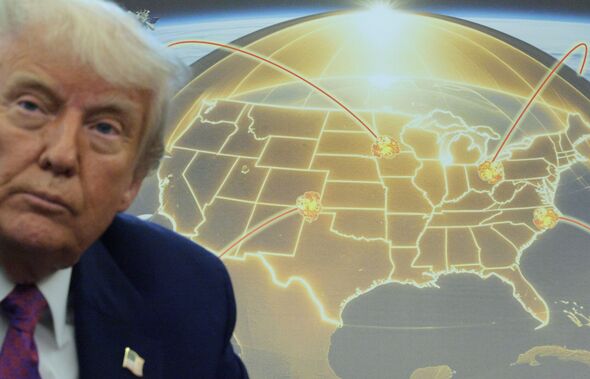
The £175 billion programme will be fully operational by 2029 (Image: Getty)
The East-West tension comes as Donald Trump said he wants a so-called £175 billion Golden Dome missile defence programme “fully operational” by 2029.
The programme includes ground and space-based capabilities to detect and stop missiles at all four major stages of a potential attack: detecting and destroying them before a launch, intercepting them in their earliest stage of flight, stopping them midcourse in the air, or halting them in the final minutes as they descend toward a target in the US.
The Pentagon has warned for years the newest missiles developed by China and Russia are so advanced that updated countermeasures are necessary. They have put offensive weapons in space, such as satellites with abilities to disable critical satellites, which can make the US vulnerable to attack.
Last year, the US claimed Russia was developing a space-based nuclear weapon that could loiter above earth before releasing a burst that would take out satellites around it.
Mr Trump, who ordered the Pentagon to pursue space-based interceptors in an executive order during the first week of his presidency, said that he had not yet spoken to Putin about Golden Dome but in a joint statement earlier this month China and Russia called the idea “deeply destabilising in nature” warning it would turn “outer space into an environment for placing weapons and an arena for armed confrontation.”
